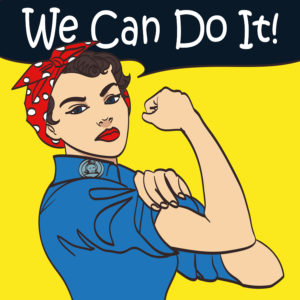 In popular culture, one story dominates that of women in working in manufacturing: Rosie the Riveter. She was created by the United States government as a marketing campaign character for recruiting women to the workforce — especially the manufacturing industry — to fill the shortage of male workers, a result of WWII. Aside from this iconic woman whose appeal seemed only to last through the war, manufacturing has always been a male-dominated workforce — and still is to this day.
In popular culture, one story dominates that of women in working in manufacturing: Rosie the Riveter. She was created by the United States government as a marketing campaign character for recruiting women to the workforce — especially the manufacturing industry — to fill the shortage of male workers, a result of WWII. Aside from this iconic woman whose appeal seemed only to last through the war, manufacturing has always been a male-dominated workforce — and still is to this day.
Today, Sept. 13, marks the opening day of the Seventh Annual Women in Manufacturing Summit, an opportunity for women manufacturers to network, learn, and share their own expertise. And it’s not just a few women who attend — the Summit attracts hundreds every year as it moves around the United States to offer these opportunities. This year’s expected 300 attendees also work in all industry levels, from the plant floor to the C-suite.
But despite the fact that women make up nearly half of the United States workforce at just over 47% of employees, many still consider manufacturing “man’s work.” The number of women working in manufacturing may be a clue as to why. According to the Bureau of Labor Statistics, only 29% of the industry was made up of female employees as of 2016. Many could also hold this manufacturing impression because of its roots in hard, dirty labor — but we all know that’s just not the case anymore.
The tide is slowly beginning to change in manufacturing: In 2015, women only made up 27% of the workforce, equal to 1940 percentages, according to the History article, but their importance was already showing signs of growth. This is due in-part to the skills gap that has left the industry desperate for skilled employees and a change in perception.

According to the Tulsa World article, 42% of women surveyed in 2016 said they would encourage their daughters or female friends and family members to pursue careers in manufacturing, up from just 24% in 2015. While these gains may seem small, AJ Jorgensen, assistant VP of Strategic Engagement of the nonprofit, National Association of Manufacturers, says in the article, “If we could close the gender gap by 10 percent, we would close the skills gap by 50 percent.”
Programs such as Women in Manufacturing & Technology, spearheaded by Focus: Hope and General Motors Inc., aim to train women in Detroit and surrounding areas in the skills needed to work in science, technology, engineering, and math (STEM) careers. General Motors has adopted the mentality of, “Let the best person do the job,” which has resulted in many women in leadership roles. Many other top manufactures are beginning to recognize the importance of a balanced workforce.
In fact, company leaders more willing to be gender inclusive are rising to the top. A report by McKinsey & Company, a global management consulting firm, called “Diversity Matters,” found companies with the most gender diversity among employees are 15% more likely to have higher financial returns than national industry averages. Simply put, savvy manufacturers who employ more women are proving more successful than those who do not.
